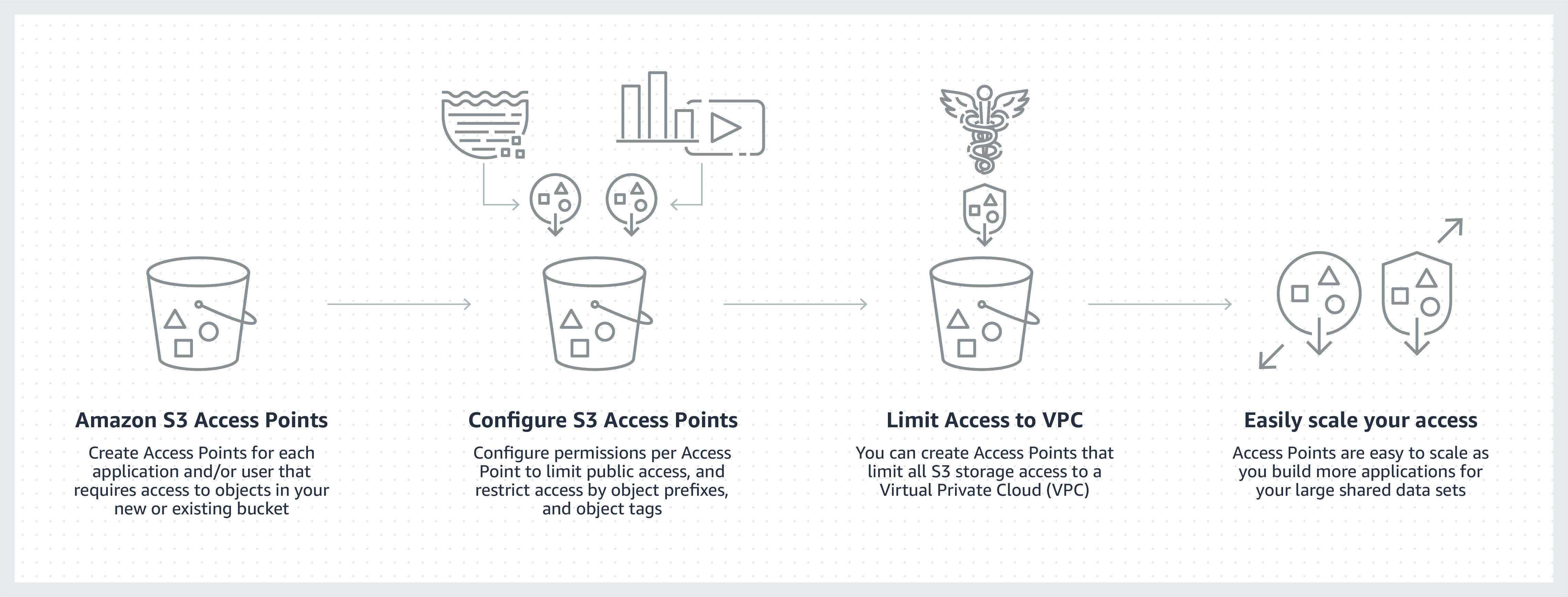Wondering what Amazon S3 Access Points are and how to set them up? I’ll explain in the video below.
Customers increasingly use Amazon S3 to store shared datasets, where data is aggregated and accessed by different applications, teams and individuals, whether for analytics, machine learning, real-time monitoring, or other data lake use cases. Managing access to this shared bucket requires a single bucket policy that controls access for dozens to hundreds of applications with different permission levels. As an application set grows, the bucket policy becomes more complex, time consuming to manage, and needs to be audited to make sure that changes don’t have an unexpected impact on another application.
Amazon S3 Access Points, a feature of S3, simplify data access for any AWS service or customer application that stores data in S3. With S3 Access Points, customers can create unique access control policies for each access point to easily control access to shared datasets. Customers with shared datasets including data lakes, media archives, and user-generated content can easily scale access for hundreds of applications by creating individualized access points with names and permissions customized for each application. Any access point can be restricted to a Virtual Private Cloud (VPC) to firewall S3 data access within customers’ private networks, and AWS Service Control Policies can be used to ensure all access points are VPC restricted. S3 Access Points are available in all regions at no additional cost.




Leave A Comment